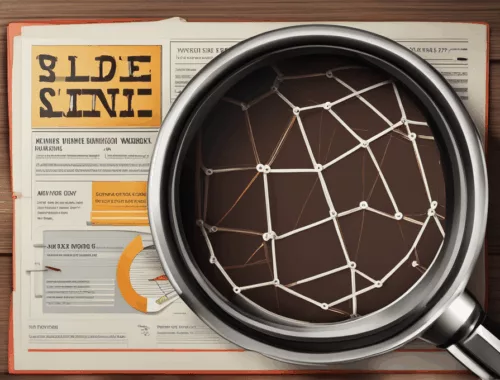
Maximizing Blog Performance: A Guide to Reducing Crawl Errors
 – Include internal links to other relevant articles on your site, if applicable.
– Include internal links to other relevant articles on your site, if applicable.
What are crawl errors?
Crawl errors are issues that prevent search engines from accessing your blog’s content properly. These errors can significantly impact your SEO performance, as they hinder Google or other search engines from understanding the full extent of your site’s content. Some common crawl errors include:
404 Not Found errors: When visitors click on a link that doesn’t exist on your blog, a 404 error occurs. These errors indicate that the pages in question no longer exist and may be indexed by search engines, which can cause confusion for users and lower your site’s credibility.
400 Bad Request errors: These errors occur when the server cannot understand the request. This can happen for various reasons, including incorrect syntax or an unsupported HTTP request method.
Too many requests: When too many requests hit your server within a short time, it can result in crawl errors. This can happen if your content is attracting a large volume of traffic, causing a strain on your server.
Identifying crawl errors on your blog
Identifying crawl errors is the first step in reducing them. Google Search Console is a powerful tool that provides a wealth of information about your site’s performance. It allows you to view crawl errors, issues, and other insights that can help you improve your site’s performance.
Here’s how to access and use Google Search Console:
- Sign in to your Google account and navigate to Google Search Console.
- Click on the “Crawl” tab to access the crawl errors report.
- Here, you’ll see a list of crawl errors, including their URLs, error types, and the number of errors.
- Clicking on a specific error URL will show you more details about the error, such as the date it was encountered, the user-agent that triggered the error, and the status code.
- You can also filter the crawl errors by date, error type, and status code, allowing you to better understand which errors are the most critical.
- Click on “Errors to remove” to access a list of crawl errors that you can remove manually from your site.
By using Google Search Console, you can identify crawl errors on your blog and prioritize fixing them to improve your site’s performance.
Common crawl error reasons
Understanding the reasons behind crawl errors is crucial in reducing them. Some common reasons include:
- Broken links: When you move a page or remove a page, broken links can prevent search engines from accessing your content. This can happen when you remove a page that contains internal links to other pages.
- 404 errors: When you change a page, move it to a different location, or delete it, you may encounter 404 errors. This is because the link pointing to the page no longer exists. To fix this, you can update the broken links to point to the new location or remove the link altogether.
- Incorrect redirects: When you move a page, you may have to create redirects to ensure that users are redirected to the correct location. If the redirects are incorrect, search engines may not be able to access your content.
- Inefficient or missing XML sitemaps: XML sitemaps are files that contain a list of your blog’s pages and posts. They help search engines discover your site’s content. If your sitemaps are inefficient or missing, search engines may not be able to access your content.
By identifying the reasons behind crawl errors and addressing them, you can reduce the number of crawl errors on your blog and improve your site’s performance.
Fixing crawl errors
Reducing crawl errors is crucial in improving your site’s performance. Here are some tips for fixing crawl errors:
- Fix broken links: When you encounter broken links, update them to point to the correct location. If the link no longer exists, consider removing it altogether.
- Update redirects: When you move a page, update the redirects to ensure that users are redirected to the correct location.
- Create XML sitemaps: When you have a large number of pages on your blog, creating an XML sitemap can help search engines discover your site’s content more efficiently.
- Update 404 errors: When you encounter 404 errors, update the links pointing to the missing pages to point to the correct location or remove the link altogether.
- Use 301 redirects: When you move a page, use 301 redirects to ensure that search engines and users are redirected to the correct location.
By following these tips, you can reduce the number of crawl errors on your blog and improve your site’s performance.
Other SEO tips for reducing crawl errors
Reducing crawl errors is just one aspect of improving your site’s performance. Here are some other SEO tips that can help:
- Use internal linking: Internal linking helps search engines discover your content more efficiently. It also helps improve user experience by making it easier for users to navigate your site.
- Use descriptive titles and meta descriptions: Using descriptive titles and meta descriptions can help improve your site’s performance by making it easier for search engines to understand your content.
- Use keywords strategically: Using keywords strategically can help improve your site’s performance by making it easier for search engines to understand your content.
- Optimize images: Optimizing images can help improve your site’s performance by making it easier for search engines to index your content.
By following these tips, you can improve your site’s performance and reduce the number of crawl errors.
You May Also Like

How to Do a Blog Giveaway Legally
June 30, 2025
Using AI for Weekly Blog Topic Ideas
June 29, 2025


